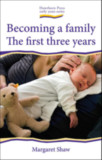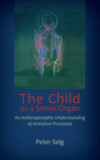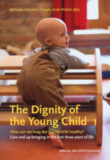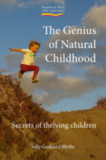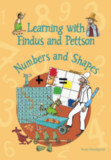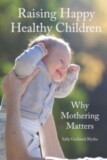The First Three Years of the Child Edition 3 Revised
How Children Learn to Walk, Speak, and Think
Introduction by Jan Göschel
Edited by Jan Göschel
Translated by Carlo Pietzner
Series edited by Richard Steel
- Publisher
Floris Books - Published
28th November 2023 - ISBN 9781782508472
- Language English
- Pages 160 pp.
- Size 5.5" x 8.5"
In this classic work on early childhood development, Karl König explores the first three years of a child's life by examining the three major achievements that occur during this stage—learning to walk, learning to speak, and learning to think.
These are three core human faculties and their acquisition, König asserts, is “an act of grace” in early childhood. He continues with a detailed analysis of this extraordinarily complex process.
This “Karl König Archive” edition includes extensive notes and a new introduction by Dr. Jan Göschel, founding President of the Camphill Academy in North America, which puts this well-known text in the context of current research.
The First Three Years of the Child provides fascinating, practical insights into early-years child development and will prove indispensable to parents, educators, medical professionals, and care takers.
C O N T E N T S:
Foreword by Jan Goeschel
Chapter 1. Acquiring the Ability to Walk Upright
The process of movement
The development of walking
Separation of self and world
Inherited and acquired movements
The stages of learning to walk upright
Chapter 2. Learning Our Native Language
Speech as expression, naming, and speaking
The anatomy of the organs of speech
Saying, naming, talking—three aspects
The stages of speech development
Learning our native language
Chapter 3. The Awakening of Thinking
Prerequisites for the awakening of thinking
Human thinking: What it is and what it is not
Speech as the first prerequisite for thought
Memory
Fantasy and play
The Earliest achievements in thinking
The first defiance and birth of the lower ego
Chapter 4. The Unfolding of the Three Highest Senses
The senses of speech and thought
The development of the word sense and thought sense
The physical organ of the sense of speech
The physical organ of the sense of thought
The ego sense
Bibliography
Index
Karl König
Dr. Karl König (1902–1966) born on September 25th 1902 in Vienna, Austria, the only son of a Jewish family who owned a shoe shop. He studied zoology, biology, and medicine at the University of Vienna, graduating in 1927. During his studies on embryology, König encountered the works of Rudolf Steiner through Goethe's scientific writings. He immediately identified with Steiner and was soon acquainted with a number of his followers, including Ita Wegman.
Upon graduation, König was offered several high-profile positions in Vienna, but instead accepted an invitation from Ita Wegman to join her clinic in Arlesheim, Switzerland.
König's time at the Clinic would shape the Camphill movement. It was here that he met his wife and co-founder, Tilla Maasberg, and it was here that he first witnessed the Advent Garden. During this festival, during which children with learning disabilities circle a spiral of moss, lighting a candle from a large central beacon, he promised to dedicate his life “to the care and education of these children.”
Following his time at Arlesheim, König moved to Germany and was involved in founding the Pilgramshain Institute—one of the early curative educational (therapeutic) centers based on anthroposophy. However, due to the political pressure of the Nazi regime, König was forced to leave Germany in 1936. He returned to Vienna, where he operated a successful medical practice and led anthroposophic study groups until 1938.
Fleeing Austria after Nazi annexation in 1938, König became part of a small group of doctors, teachers, and artists to be granted political asylum in the United Kingdom in 1939. König moved to Aberdeenshire, Scotland, where this group founded a home for children with learning disabilities, which became the beginning of the Camphill movement. After World War II, more schools were established, as well as curative education villages for adults with disabilities, based on the ideal of working together as a community.
In the following decades, König's Aberdeenshire community grew and expanded into Britain, Europe, and North America, becoming the Camphill movement we know today. During this period, König worked tirelessly to help children and adults with special needs through publications, talks, and seminars—as well as by establishing communities around the world.
Karl König returned to Germany in 1964 and began yet another community, this one near Überlingen, on Lake Constance (Bodensee), where he died in 1966.



